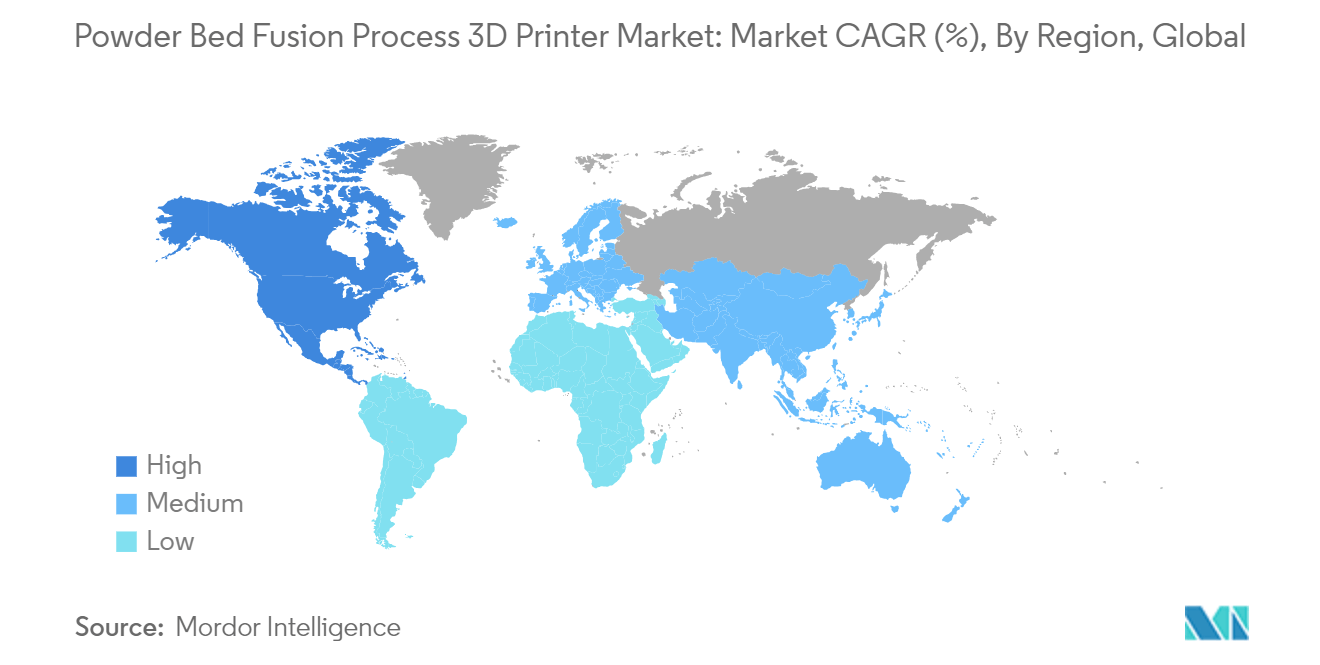Market Trends of Powder Bed Fusion Process 3D Printer Industry
Increasing Demand from the Healthcare Segment is Expected to Proliferate the Market's Growth
- As technology advances, the healthcare industry is rapidly adopting innovations to enhance patient care and outcomes. Among these innovations is the powder bed fusion machine, a groundbreaking tool transforming precision healthcare.
- In healthcare, powder bed fusion machines are primarily used to create customized implants and prosthetics. The demand for these prosthetic components is growing, driven by a surge in accidental and sports-related injuries. The 2023 Global Status Report on Road Safety by the WHO underscores the health challenge of road traffic-related deaths and injuries across the world. Furthermore, the report notes that an additional 20 to 50 million individuals experience non-fatal injuries, with a significant number facing disabilities.
- Moreover, the report highlights that nearly 92% of global road fatalities occur in low- and middle-income countries. Consequently, these regions are expected to present significant opportunities in the analyzed market. Data from the Thai RSC Accident Information Center indicates that, as of October 2023, Bangkok emerged as the most accident-prone area in Thailand, recording roughly 84,170 road accidents. This was closely followed by the Northeastern region, which saw about 81,920 accidents.
- Conventional implants and prosthetics often adopt a one-size-fits-all approach, leading to potential discomfort and limited functionality. Powder bed fusion machines empower healthcare professionals to craft implants and prosthetics that align seamlessly with a patient's unique anatomy. This advancement enhances comfort and functionality and diminishes the chances of complications and rejections.
- Beyond implants and prosthetics, powder bed fusion machines are also pivotal in producing precision surgical tools. These tools, being lightweight, durable, and ergonomic, are tailored for intricate surgeries. Leveraging 3D printing technology, healthcare professionals can devise surgical instruments that align perfectly with specific procedures, thereby minimizing errors and bolstering surgical success.

North America is Expected to Hold a Significant Share in the Market
- The United States, Canada, and Mexico are the primary drivers of the market's growth in North America. The region's demand for 3D printers utilizing the metal powder bed fusion process is anticipated to surge, fueled by the aerospace and healthcare sectors. North America's established economy sees substantial investments across diverse industries, including automotive, chemicals, tools, and molding. Notably, the region produces a significant share of the world's aerospace components, bolstered by the presence of industry giants like Boeing and Bombardier.
- Robust economic expansion and rising air travel have spurred the demand for more aircraft in the region. Within the aerospace domain, the powder bed fusion process transforms the creation of lightweight, high-strength components. Manufacturers in the aircraft and spacecraft sectors leverage this technology to produce intricate parts, like turbine blades and fuel nozzles, which are lighter and boast enhanced performance. This capability to craft parts with optimized internal structures translates to better fuel efficiency and overall operational performance in aerospace.
- North America's market growth in healthcare is bolstered by supportive government policies, a robust network of local suppliers, and a rising number of vendors specializing in healthcare products derived from the powder bed fusion process. For instance, in recent years, the US government has announced significant growth in expenditure to modernize the healthcare infrastructure, creating a favorable ecosystem for the studied market's growth.
- In the US automotive sector, the powder bed fusion process is increasingly embraced for swift prototyping and tailored automotive components. This technology, from crafting engine parts to lightweight chassis, allows automakers to rapidly iterate designs, expediting the launch of new vehicle models. Furthermore, it plays a pivotal role in electric vehicle (EV) development, where emphasizing lightweight materials and intricate designs is essential for optimizing battery efficiency and extending vehicle range.


